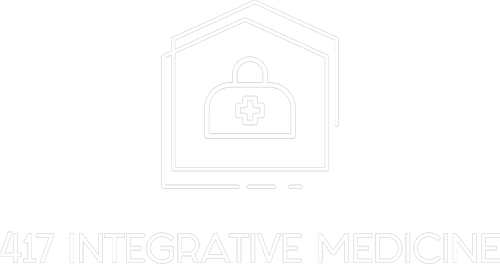Aug 6, 2025
How Infrared Sauna Therapy Supports Skin Health, Pain Relief, and Detoxification
How Infrared Sauna Therapy Supports Skin Health, Pain Relief, and Detoxification

An infrared sauna is a type of sauna that uses light to create heat. Instead of heating the air around you like a traditional sauna, it uses infrared light to penetrate the body and heat your body directly. This method causes you to sweat at a lower temperature, which can be easier to tolerate and may offer unique health benefits.
Many people use infrared sauna therapy as part of their wellness routine to support skin health, manage chronic pain, and promote detoxification. But how does it work, and what can you expect from an infrared sauna session?
Let’s explore the possible health benefits of using an infrared sauna and how it can help improve your overall health.
Using Infrared Sauna Therapy for Skin Health
Your skin is your body’s largest organ. It plays a big role in detoxing and temperature control. But it also reacts to stress, diet, environment, and your health condition. If you’re struggling with dull skin, breakouts, or dryness, infrared sauna therapy might offer some help.
When infrared saunas heat your body, they help increase blood flow. This brings more nutrients and oxygen to the skin. As you sweat, you help remove dirt, oil, and other buildup from your pores. Many people notice a clearer, more refreshed look after regular sauna sessions.
Infrared light to penetrate deeper layers of skin may also boost collagen production. This can improve elasticity, reduce the look of fine lines, and support long-term skin health.
Far infrared and near infrared waves are two types of infrared used in saunas. Some saunas offer full-spectrum infrared, which combines both. The light spectrum may affect how deeply the infrared rays reach. Some saunas also include red light therapy, which can further support skin repair and renewal.
Whether you’re dealing with dryness, breakouts, or aging skin, sitting in an infrared sauna just a few times a week can be a useful step in your health and wellness routine.
Pain Relief and Infrared Therapy
Chronic pain can affect every part of life. Conditions like arthritis, muscle tension, or past injuries can make daily movement harder. Infrared sauna therapy is sometimes used to manage pain and inflammation naturally, without medicine.
The infrared waves in a light sauna help to penetrate muscles and joints. This gentle infrared heat helps increase circulation, bring oxygen to damaged tissues, and support relaxation. Many people say they feel better after an infrared sauna session because their body feels looser and less tense.
Unlike a dry sauna or traditional sauna, infrared sauna use works at lower temperatures, which may be better for people who can’t handle high heat. The effects of moderate sauna use can activate the parasympathetic nervous system, which helps the body rest and recover.
Regular sauna use can help with stiffness, soreness, and general body tension. The therapeutic benefits may be especially helpful for people managing arthritis, chronic pain, or healing from workouts.
If you’re unsure if an infrared sauna is right for your condition, speak to a healthcare provider first. But many people find that therapy sessions in an infrared sauna offer a soothing break from daily stress and discomfort.
Detoxification: Sweating With Purpose
One of the most talked-about benefits of an infrared sauna is detoxification. But what does that mean, and how does sauna use help?
When you sit in a sauna that uses light, your body heats up and begins to sweat. This natural process helps remove waste products from the skin. Some say infrared sauna therapy harnesses deeper infrared light to detoxify heavy metals and chemicals.
While research is still ongoing, many users report feeling lighter, more relaxed, and refreshed after a sauna bath. Infrared therapy uses light waves to trigger sweat at a cellular level. This may support the body’s efforts to clean out harmful substances.
Saunas may also improve the way your body regulates temperature, reacts to stress, and supports your cardiovascular system. Some evidence shows infrared sauna use can help reduce inflammation and support heart health, especially with regular sauna sessions.
If you’re interested in detox, using an infrared sauna is a safe, low-impact option that fits into many health and wellness routines. Just remember to stay hydrated, since an infrared sauna may cause you to sweat more than usual.
Is Infrared Sauna Therapy Right for You?
Many people try the infrared sauna because it’s simple, non-invasive, and fits into most routines. Whether you’re looking to clear up your skin, ease body aches, or support your body’s detox process, infrared sauna therapy could be a helpful option.
As with any wellness tool, talk to a healthcare provider if you have medical concerns or health conditions. While sauna use may not be for everyone, most healthy adults can safely enjoy the health benefits of sauna bathing with regular sessions.
Infrared saunas can help you feel better, look healthier, and improve how your body functions. With no need for harsh treatments or chemicals, using infrared saunas is a gentle and effective way to boost your wellness.
Feel Better, Naturally
At 417 Integrative Medicine, we believe infrared sauna therapy can be part of a complete health and wellness routine. With its many possible health benefits, from skin health to pain relief to detox, it’s a gentle way to support your body inside and out.
Book your infrared sauna session today and see what a few minutes of light therapy can do for your wellness.

417 Integrative Medicine
1335 E Republic Rd D, Springfield, MO 65804
(417) 363-3900
https://www.417integrativemedicine.com/



